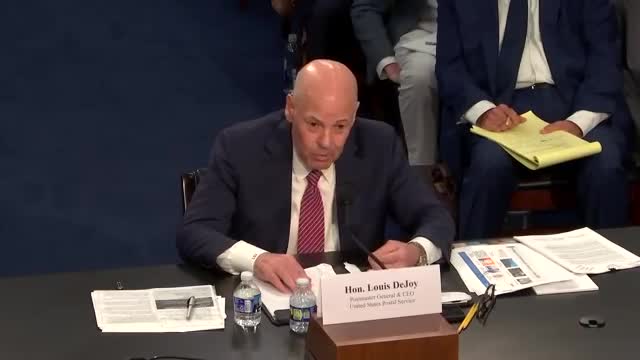Postal Service Faces Crisis Amid Rising Costs and Inflation
September 26, 2024 | Appropriations: House Committee, Standing Committees - House & Senate, Congressional Hearings Compilation
This article was created by AI summarizing key points discussed. AI makes mistakes, so for full details and context, please refer to the video of the full meeting. Please report any errors so we can fix them. Report an error »

In a recent government meeting, discussions centered on the financial challenges facing the United States Postal Service (USPS) and the implications of rising costs and operational changes. The Postmaster General highlighted the significant impact of inflation on the USPS, noting a staggering $6.3 billion loss attributed to inflationary pressures over the past three years. He emphasized that while inflation has surged by 20%, the Postal Service has not been able to adjust its pricing accordingly, leading to ongoing financial strain.
The conversation also touched on the handling of ballots during elections, clarifying that the USPS receives outgoing ballots in bulk from various states, rather than individual ballots. This distinction was made to address concerns about the integrity of the voting process and to ensure transparency regarding how ballots are processed.
Additionally, the Postmaster General pointed out that the cost of a first-class stamp in the U.S. is significantly lower than in many other countries, suggesting that if the USPS were to reflect true operational costs, prices would need to rise substantially. He indicated that the current pricing model has been ineffective, particularly following a 50% drop in mail volume since the passage of the Postal Accountability and Enhancement Act (PAEA).
The meeting underscored the urgent need for a reevaluation of the USPS's pricing and operational strategies to ensure sustainability in the face of economic challenges and changing mail volume dynamics.
The conversation also touched on the handling of ballots during elections, clarifying that the USPS receives outgoing ballots in bulk from various states, rather than individual ballots. This distinction was made to address concerns about the integrity of the voting process and to ensure transparency regarding how ballots are processed.
Additionally, the Postmaster General pointed out that the cost of a first-class stamp in the U.S. is significantly lower than in many other countries, suggesting that if the USPS were to reflect true operational costs, prices would need to rise substantially. He indicated that the current pricing model has been ineffective, particularly following a 50% drop in mail volume since the passage of the Postal Accountability and Enhancement Act (PAEA).
The meeting underscored the urgent need for a reevaluation of the USPS's pricing and operational strategies to ensure sustainability in the face of economic challenges and changing mail volume dynamics.
View full meeting
This article is based on a recent meeting—watch the full video and explore the complete transcript for deeper insights into the discussion.
View full meeting